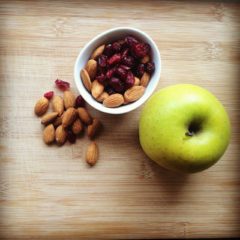Marketing dental supplies
Is This Obsession “Killing” Your Dental Marketing Content?
An obsession. You probably have one (or more).
I do.
Relax. This isn’t confession time.
But I will confess to one thing. I’m obsessed these days with helping dental website owners and developers end their obsession with feature-heavy content.
Features have their place. Actually, they have one strategic purpose…and overuse isn’t one of them.
My so-called, “rant” is valid these days. It’s a “sore-spot” with me primarily because I’m still recoiling from related (“You didn’t tell people how great we are…”) push-back on a client’s web page copy I recently shipped (it’s not the first time and probably won’t be the last).
Let’s define what I mean by “features.” They are any aspect or related wording that describes your product or service.
Think color, clarity, class, or construction. Features are the easiest to spot and “spin” when writing copy.
Typically, feature-intense writing requires less creative energy. Why?
You’re merely describing what’s in front of you or how you want your reader, buyer, customer, client, or patient to see your product/service.
Features are easy to recognize because they’re commonly accented with words like “state-of-the-art,” “cutting-edge,” or any word ending in “-est” (e.g. “latest,” “greatest,” “best,” etc).
The comparative truth about features in your copy/content
Features have their place. Where?
Alongside compelling benefits.
Features appeal to your patient’s or client’s logic. Benefits connect your patient’s or client’s emotional desire with your product or service.
Compel a response with BENEFITS.
Then…
Rationalize their decision with FEATURES.
Copywriter and author, Bob Bly, shares a classic illustration of the Feature-Benefit issue in his book, The Copywriter’s Handbook.
“Features and Benefits of a #2 Pencil
Feature: The pencil is a wooden cylinder surrounded by a graphite core. Benefit: Can be re-sharpened as often as you like to ensure clean, crisp writing.
Feature: One end is capped by a rubber eraser. Benefit: Convenient eraser lets you correct writing errors cleanly and quickly.
Feature: Eraser is attached with a metal band. Benefit: Tight-fitting metal band holds eraser snugly in place – so you’ll always have an eraser when you need it.
Feature: Pencil is 7.5 inches long. Benefit: Long length ensures long writing life.
Feature: Pencil is 1/4 inch in diameter. Benefit: Slender shape makes it easy to hold and comfortable to write with.
Feature: Pencil is a #2. Benefit: Graphite core is blended so that it writes smoothly , yet is crisp and easy-to-read.
Feature: Yellow exterior. Benefit: Bright yellow exterior ensures that it’s easy to spot on a messy desk or in a crowded drawer.
Feature: Sold by the dozen. Benefit: Sold in a convenient 12-pack so if you lose one, you don’t have to run to the store for another. Also, more cost-effective.” (pp. 59-60)
Understand that features have their place in your content. But ultimately, the “selling/compelling point” is the benefit.
How to Turn Your Obsession with Features Into More Compelling, Benefit-Focused Content
For every feature – think benefit
Review Bly’s #2 pencil illustration. You’ve held a pencil, placed a pencil behind your ear, chewed on a pencil for years, right?
And you probably didn’t give thought to the benefits listed in the example. But they are present nonetheless.
The task of your copy/content is to uncover the hidden benefits, expose them to your reader, and compel them to take action as result. This is the hard work of copywriting.
- Train your senses to see, hear, smell, touch benefits. View your products/services through a sensory lens.
- List every benefit you can think of for the product/service you’re promoting. Build your content around them.
Refuse to list a feature in your copy/content unless it’s accompanied by a compelling benefit.
Ruthlessly eliminate feature-fluff in your copy. I’ll go so far as to say that using fluff words (”state-of-the-art,” “cutting-edge,” etc) is the lazy approach.
Again, it takes work to uncover and craft content around benefits. Then apply the extra effort to rationalize them with features.
Ask why your newest equipment, service, product, etc is “state-of-the-art.” How does that “fluff-wording” translate to a compelling benefit? Write to that!
Get emotional.
Compelling copy grabs your reader’s emotions. It’s not only about tears and fears (though those are strong emotional responses).
The better part of emotions involves painting a picture for your reader. It’s guiding them to see themselves using, benefiting from, and being changed by your product or service.
A feature gets their attention. A benefit compels a decision.
- Think like your reader/client/patient. What would you feel, sense, believe about the product/service?
- List the emotional triggers that your product/service touches on. Attach a benefit to that emotion.
Get obsessed about your copy/content. But make sure there’s a benefit.
How to Create Headlines That Compel a Positive Response to Your Dental Marketing Content
How important are headlines? Before I reveal how to create them, understand that your dental promotions, dental web page copy, and even your dental blog posts can succeed or fail based on the headline.
Advertising and copywriting legend, John Caples, once said they are the most important part of your advertisement. He proved his point by committing four of his 18 chapters to them in his book, Tested Advertising Methods.
Your headline copy can make or break your dental marketing. This is why they’re so difficult and occasionally time-consuming to write.
Professionally speaking, I invest the first phase of writing to the headline. You should expect to do the same if…you want to compel your reader to engage with your content.
Your headline has ONE job
Your headline MUST grab your reader’s attention.
John Caples adds this jolting perspective – “If the headline is poor, the copy will not be read. And copy that is not read does not sell goods.”
You could say, “I”m a dental provider, I don’t ‘sell’.” I encourage you to not get caught up in the semantics of what is or is not “sales.”
Bottom line, your headline compels or it doesn’t. The middle ground is littered with well intentioned, creative, salesy hype, or lame attempts at trying to be cute.
How to Create Headlines that Compel Your Readers to Keep Reading to the Point of Doing What You’re Asking Them to Do
(By the way, there are two bonus insights in that sub-heading.)
1-Promise something.
Too many promotions are vague. Vagueness should not be confused with compliance with dental industry marketing standards.
There’s a difference in making unsubstantiated claims about a treatment or service and being vague about the benefit they can potentially deliver.
Make a promise that introduces a benefit.
“Who else wants whiter teeth – in less time?”
(Promise: whiter teeth, less time)
“Great new discovery controls bad breath – makes your teeth healthier too.”
(Promise: fresher breath, healthier teeth)
Those promises include practical benefits. The stated benefits compel your reader to read deeper into your promotion to discover more.
Promised results or benefits compel your reader to stay in the conversation with you via your promotion.
- List at least 5 benefits of the service you’re promoting.
- Use specific, direct wording that establishes your service as THE solution (promised result) for taking action.
2-Embed an image in your reader’s mind.
What your reader can see themselves using, doing, etc will compel them to take action. Avoid language that’s overused, technical, industry-oriented, insider-based, etc.
You “know, like, and trust” your industry, right? This makes it natural for you to feel as though everyone else (including your patients/clients) do also.
This is where “How To…” headlines work well.
“How to [COMMON TASK] That [REWARDING BENEFIT].”
The “common task” creates an image of an action, activity, priority, etc. And again, you compel with a “rewarding benefit” – in this instance, something the reader can “see” themselves enjoying, etc.
3-”State a fact.”
Facts establish credibility. When you can highlight a fact in your content headline – do it!
Your reader will be drawn deeper in to your content. And they will begin to trust you as a credible source of information.
Select portions of your positive reviews or testimonials. Remember: You can protect the identity of your source by using their first name initial or their full name initials (e.g. “E” “ES,” etc.) for attribution.
Here’s an example:
“…I went to my high school reunion and the compliments made me feel like I’d been crowned homecoming queen!” – JS. Want the Same Results?
Research data sources of your product or service. Share benefit oriented statistics in you headline.
92% of Our Dental Patients Said This One Thing Eliminated Their [PROBLEM]
If You Do This Two Times Per Year You Could Reduce Your Dental Treatment Costs by [X]%
Facts help compel a response.
4-”Ask a question.”
Questions create curiosity. They also produce engagement with your solution or answer.
In the previous headline example using the quotation (“I went to my high school reunion and the compliments made me feel like I’d been crowned homecoming queen!” – JS Want the Same Results?) the question creates curiosity on two levels.
1) Tell me more about the “results” and 2) Give me more information about what she did to achieve them.
Questions also give your reader a way to process their assumptions. Your question-oriented headline can create a “Hmmm, I haven’t thought about that before…” response.
Your reader will begin to engage with your content by answering the question you posed. It’s important that your question headline prompts curiosity.
A question headline works for a simple reason. It creates a compelling reason to stay with your content and eventually take action as result.
There is more to a promotional headline than creativity or cuteness. Lead with benefits and you’ll win more often.
3 Dental Marketing Strategies That Increase Your Influence Without Wasting Your Budget on Cold-Contact Approaches
I recently received a cold-contact via my website. It prompted my thinking about prospecting, attaining new dental patients or clients, and what works and what doesn’t.
First, they get an “A” for effort. In fact, it confirms what should be common for anyone building a practice or business of any kind – some action is better than no action.
What about measured action?
By “measured action” I’m referring to the process of thinking strategically about your steps to patient/client attainment. Strategy matters.
But too much of a measured, strategic approach can equal no action. Over-thinking strangles progress and momentum.
Think. Strategize. Act!
It’s preferable to find a sweet-spot for your dental marketing strategy. What delivers consistent results?
That’s a tough question to answer. And it’s more difficult to answer if you’re not open to new (albiet relevant) approaches for making a dental patient/client connection.
There was a key thing missing from my earlier mentioned cold-contact’s effort. We had no current or ongoing conversation.
I do not know anything about them…their business…their track-record…their reputation…their circle of influence (this is huge to me). It begs another question: how would any of these issues have been solved?
Glad you asked.
Marketing (dental included) rises and falls on consistent, authentic “conversation.”
How to Create Effective Conversations and Build Your Influence Without Wasting Your Marketing Strategy (and Dollars) on Cold-Contact Methods
1-Stop trying to make a creative splash
Author and consultant, Jim Collins, is known for his challenge to give more attention to your “stop-doing list” than to your “to-do” list. I agree.
Item one on your “stop” list is this – quit trying so hard. The default action when marketing or re-branding your services is to think creativity, color, and colossal.
There’s more to having influence than new, bright, and bold initiatives.
- Adopt a problem-solution mindset. Dive into your patient’s and client’s “pain-points.” Grasp what keeps them awake-at-night, the big-3 problems they’re currently facing, what they don’t know or understand about the benefits of your services, etc. Now…put pen to paper about how you can solve those problems!
- Adapt your content to provide answers to questions and solutions to problems. If all you deliver is promotions, deals, and sales your audience will grow numb to you. Again, create useful, valuable content around the solutions you can provide for their problems. Be an advocate more than an advertiser.
- Attach a listening “device” to everything you do and every service you provide. Simple surveys, “How’d we do…?-questions, or focus-groups of select patients/clients are simple sources of data you can use to expand your valuable influence.
2-De-trendify engagement
Good words and ideas get lost when they become trendy. This applies to the term “engagement.”
I’ve avoided using the term because it has become sooo trendy. But there’s too much to lose if you toss it aside.
The gold essence of engagement is making a connection.
Does your dental marketing suffer from too much effort and not enough engagement?
- Talk to your audience instead of promoting to them. Measure the ratio of useful content (the kind that answers questions and solve problems) to promotional pushes. Give more than you ask for.
- Engage with your dental patients/clients around the solutions they seek rather than the latest deal-of-the-month promotion. Consumers are smart. They’re on to you and they can smell a promotion from a mile away. What if you gained influence over time via trusted, consistently delivered content on your blog/article web page, a newsletter, or emails with links to your content?
3-Be yourself
Your marketing language reveals much about your character as a business. If you rely on hype or salesy promotions you set yourself up as having to conquer a prospect.
Rather, be a normal, conversational, inviting presence.
- Use the everyday language of your patients/clients. Write conversationally. Speak to your audience as you would to a friend. Keep it one-to-one in tone.
- Avoid tech-speak, insider-terms, or worn-out marketing fluff (e.g. “state-of-the-art,” “cutting-edge,” and any word that ends in “-est” – best, greatest, latest…).
Sure, any patient/client development action is better than none. Give more measurable attention to building the relationship so that when you do show up it feels less…well…”cold.”







